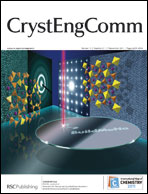Uniform nanoerythrocyte-like, dodecahedron and spindle-like LuVO4 had been successfully synthesized on a large scale by a simple complex agent assisted hydrothermal method. The nanoerythrocyte-like LuVO4 was characterized by X-ray diffraction, X-ray photoelectron spectroscopy, Fourier transform infrared spectroscopy, field-emission scanning electron microscopy, high-resolution transmission electron microscopy, photoluminescence and cathodoluminescence. The possible formation mechanism of the LuVO4 with different morphologies were proposed. The LuVO4:Ln3+ (Ln = Sm, Eu, Dy, Er and Tm) phosphors show strong light emissions with different colors due to the different activator ions under ultraviolet light excitation or low-voltage electron beam excitation and the LuVO4:Sm3+ samples with different complex agents exhibit interesting morphology-dependent optical properties. The complex-agents-assisted hydrothermal synthesis provides us one method to explore the special morphology of nano/micromaterials and the new optical materials.

You have access to this article
 Please wait while we load your content...
Something went wrong. Try again?
Please wait while we load your content...
Something went wrong. Try again?


 Please wait while we load your content...
Please wait while we load your content...